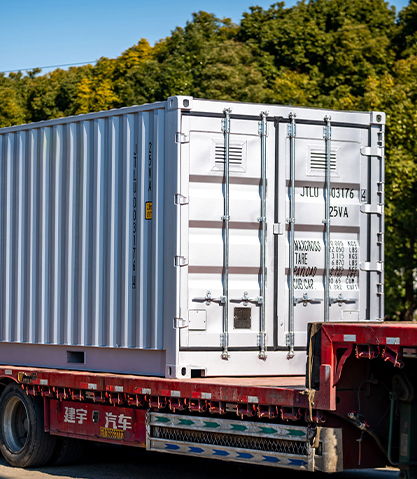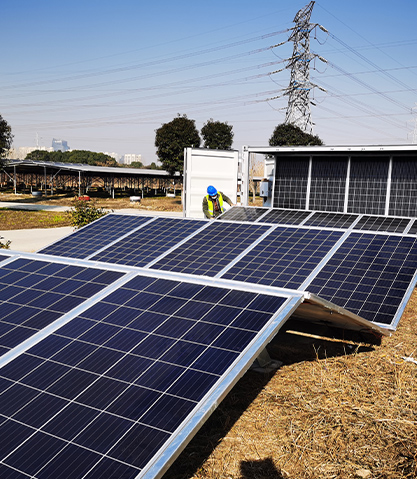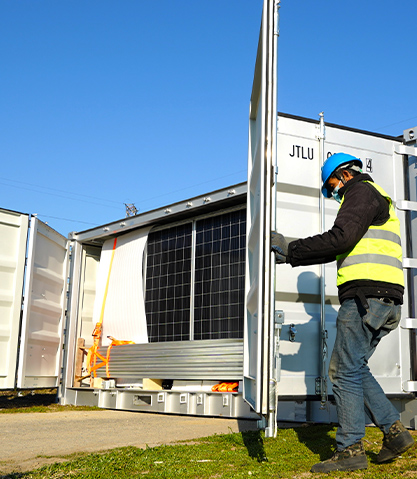Battery ESS (Energy Storage System) containers manage the operational lifecycle of batteries through a combination of advanced technologies, hardware components, and software algorithms that control the charge/discharge cycles and ensure the system's longevity and efficiency. Here's how this management process typically works:
1. Battery Management System (BMS)
The Battery Management System (BMS) is the core component responsible for monitoring and managing the operational lifecycle of batteries in ESS containers. The BMS performs several critical functions:
Monitoring Battery Health: The BMS constantly tracks key parameters such as voltage, current, temperature, and state of charge (SOC) of each individual cell or battery pack. By continuously monitoring these metrics, it can detect any potential issues, such as overcharging, deep discharging, or temperature fluctuations, that could negatively impact battery life.
Balancing Cells: In multi-cell batteries (such as lithium-ion), the BMS ensures that all cells are balanced during charge and discharge cycles. This prevents cell imbalances that can cause some cells to wear out faster than others.
Temperature Management: The BMS regulates battery temperature through built-in cooling/heating systems. Since battery performance is highly sensitive to temperature, effective thermal management is crucial for extending battery life and preventing damage during charging/discharging cycles.
2. Charge/Discharge Control Algorithms
Optimal Charging Algorithms: Battery ESS containers use charge algorithms tailored to the specific type of battery chemistry (e.g., lithium-ion, lead-acid, sodium-ion). These algorithms optimize the charge cycle by adjusting the current and voltage to match the battery's characteristics, ensuring it charges efficiently without overcharging. Typically, constant current/constant voltage (CC/CV) charging profiles are used, particularly for lithium-ion batteries.
Discharge Control: Discharge control algorithms ensure that batteries are not depleted beyond a safe depth of discharge (DOD). The system might stop discharging when the battery reaches a certain state of charge to prevent deep discharge, which could degrade battery capacity and shorten lifespan.
Cycle Depth Management: The BMS ensures that the system operates within an optimal cycle depth. While deep cycles (charging from 0% to 100% or discharging from 100% to 0%) can be efficient, they are hard on batteries over time. The BMS may limit the discharge depth or recommend more frequent partial cycles to prolong the lifespan of the batteries.
3. State of Charge (SOC) and State of Health (SOH) Monitoring
State of Charge (SOC): The BMS constantly monitors the SOC to understand how much charge is left in the battery. The SOC helps to regulate when the system should initiate charging or discharging to maintain an optimal operational window and to avoid stress on the battery.
State of Health (SOH): SOH refers to the overall health of the battery and reflects its capacity to hold charge compared to when it was new. As batteries age, their efficiency decreases, and the BMS tracks this degradation to provide warnings about performance drops or the need for maintenance or replacement.
4. Active and Passive Cooling Systems
Temperature Regulation: Proper thermal management is essential for maintaining battery performance throughout the charge/discharge cycle. Battery ESS containers often include air conditioning or liquid cooling systems that regulate the internal temperature. By keeping the battery temperature within the optimal operating range, the system helps to prevent overheating, which can accelerate degradation during high current cycles.
Active Cooling: Active cooling systems use fans or liquid cooling to draw excess heat away from the battery cells during discharge (when more heat is generated due to high current draw). This helps maintain battery efficiency and lifespan.
Passive Cooling: Some systems use heat sinks or other passive cooling techniques that rely on natural airflow or materials with high thermal conductivity to dissipate heat.
5. Cycle Life Management
Cycle Count Monitoring: Every battery has a rated cycle life—the number of full charge/discharge cycles it can undergo before its capacity degrades significantly. Battery ESS containers are designed to maximize the number of cycles by minimizing deep discharge cycles and using algorithms that avoid overcharging or overheating, both of which can shorten cycle life.
Partial Charging/Discharging: In many systems, the BMS will optimize battery usage by avoiding full charge or full discharge cycles and instead operate the battery between a narrower range, known as the optimal charge window. For example, it may keep the battery between 20% and 80% charge, which can substantially extend the number of effective cycles before noticeable degradation occurs.

6. Energy Flow and Efficiency Optimization
Energy Harvesting: In system
s connected to renewable energy sources like solar or wind, battery ESS containers are optimized to store energy when production is high and release it when demand is high or production is low. This continuous charge/discharge cycle is managed to ensure the batteries are not overused and are kept within safe operational parameters.
Energy Efficiency: Battery ESS containers use advanced algorithms to optimize the overall energy flow, ensuring that the charging and discharging processes are done with the least possible energy loss. This helps improve the system's efficiency and reduces stress on the batteries during prolonged cycles.
7. Maintenance and Monitoring
Preventive Maintenance: Many ESS containers incorporate predictive maintenance tools that analyze battery data over time, such as temperature, charge/discharge cycles, and internal resistance, to predict when a battery might need maintenance or replacement.
Remote Monitoring: ESS systems are often equipped with IoT (Internet of Things) technology that allows operators to monitor battery performance remotely. This includes checking charge/discharge cycles, system performance, and potential alerts related to battery health or lifecycle management.
Self-Diagnostics: Some advanced battery ESS containers include self-diagnostic tools that perform regular checks on the battery's health and status, ensuring that the system is performing as expected and identifying potential issues before they cause failures.
8. Battery Replacement and End-of-Life (EOL) Management
Lifecycle Tracking: As batteries degrade over time, the BMS monitors the battery's health and provides insights into when the battery is approaching its end of life. This information helps operators plan for timely battery replacement or repurposing (such as using older batteries in lower-demand applications or second-life storage).
Second-Life Applications: Some ESS containers may incorporate second-life batteries that have been used in electric vehicles or other applications. These batteries are tested and re-purposed for use in energy storage systems, providing a more sustainable option while maintaining an acceptable level of performance.

 English
English 中文简体
中文简体 عربى
عربى



